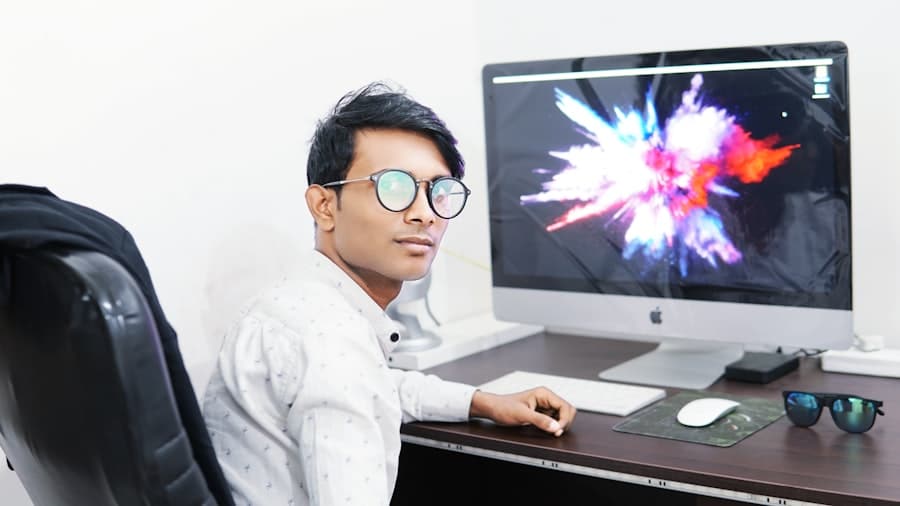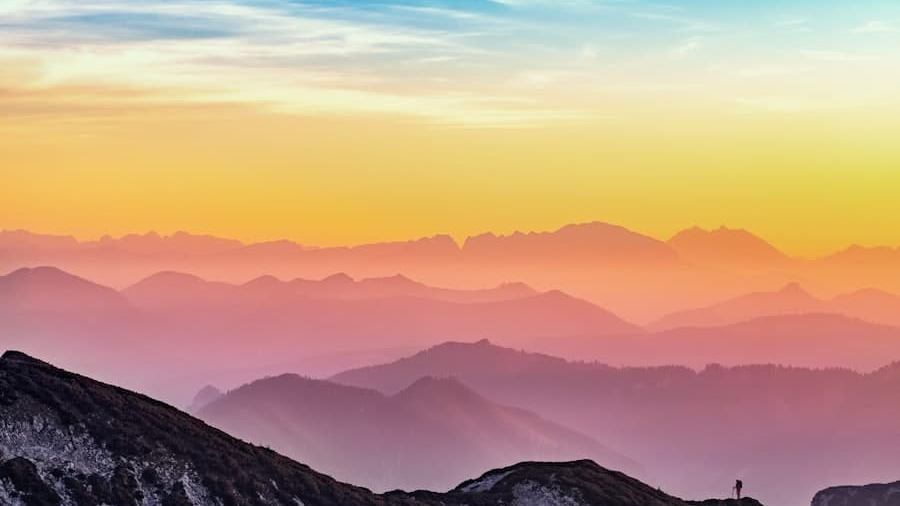The intersection of artificial intelligence (AI) and creativity has sparked a revolution in how we approach artistic expression, design, and innovation. Augmented creativity tools powered by AI are reshaping the landscape of creative industries, enabling artists, designers, and content creators to push the boundaries of their imagination. These tools leverage machine learning algorithms, natural language processing, and computer vision to assist in the creative process, offering new avenues for exploration and experimentation.
As we delve into this fascinating domain, it becomes evident that AI is not merely a tool for automation but a collaborator that enhances human creativity. The rise of AI in creative fields is not just a trend; it represents a fundamental shift in how we conceive of creativity itself. Traditionally viewed as an inherently human trait, creativity is now being redefined through the lens of technology.
AI systems can analyze vast datasets, recognize patterns, and generate novel ideas, thereby augmenting the creative capabilities of individuals. This synergy between human intuition and machine intelligence opens up exciting possibilities for innovation across various sectors, from visual arts to music composition and content generation.
Key Takeaways
- AI is transforming creative processes by augmenting human creativity rather than replacing it.
- The integration of AI in creative industries has evolved from simple automation to complex collaboration tools.
- AI enhances creativity by providing new perspectives, generating ideas, and streamlining workflows.
- Ethical considerations, such as bias and authorship, are crucial in the development of AI-driven creativity tools.
- The future of augmented creativity lies in collaborative partnerships between humans and AI technologies.
Understanding the Impact of AI on Creative Processes
AI’s impact on creative processes is multifaceted, influencing everything from ideation to execution. One of the most significant ways AI enhances creativity is through its ability to provide inspiration and generate ideas. For instance, tools like OpenAI’s GPT-3 can assist writers by suggesting plot twists or character developments based on user prompts.
This capability allows creators to explore directions they might not have considered, effectively broadening their creative horizons. By acting as a brainstorming partner, AI can help overcome creative blocks and stimulate new lines of thought. Moreover, AI can analyze existing works to identify trends and styles that resonate with audiences.
Artists can then use this information to inform their own work, blending traditional techniques with contemporary insights derived from data analysis. This data-driven approach not only enhances the creative process but also ensures that the resulting works are more aligned with audience preferences, thereby increasing their impact.
The Evolution of AI in Creative Industries

The evolution of AI in creative industries has been marked by significant advancements in technology and a growing acceptance of AI as a creative partner. Initially, AI applications in creativity were limited to basic tasks such as image editing or simple music composition.
Today, AI can generate complex artworks, compose symphonies, and even write screenplays that rival those created by human authors. One notable example of this evolution is the development of generative adversarial networks (GANs), which have revolutionized the creation of visual art. GANs consist of two neural networks—the generator and the discriminator—that work in tandem to produce images that are increasingly indistinguishable from those created by humans.
Artists like Refik Anadol have harnessed this technology to create stunning installations that blend art and data, pushing the boundaries of what is considered traditional art. This evolution signifies a shift from viewing AI as a mere tool to recognizing it as an integral part of the creative process.
Exploring the Potential of AI in Enhancing Creativity
The potential of AI to enhance creativity is vast and varied, offering unique opportunities for artists and creators across disciplines. One area where AI has shown remarkable promise is in music composition. Tools like AIVA (Artificial Intelligence Virtual Artist) utilize deep learning algorithms to compose original pieces of music in various styles.
By analyzing existing compositions, AIVA can generate new melodies that reflect the nuances of different genres, providing musicians with a fresh source of inspiration. In addition to music, AI’s potential extends to writing and storytelling. Platforms like Sudowrite enable authors to collaborate with AI in crafting narratives, suggesting plot developments or character arcs based on user input.
This collaborative approach not only accelerates the writing process but also encourages writers to experiment with unconventional ideas that they might not have explored independently. The ability to iterate quickly and receive instant feedback from an AI partner fosters a dynamic creative environment where innovation thrives.
Ethical Considerations in AI-Driven Creativity Tools
As AI continues to permeate creative industries, ethical considerations surrounding its use become increasingly important. One major concern is the question of authorship and ownership. When an AI generates a piece of art or music, who holds the rights to that creation?
This ambiguity raises complex legal and moral questions about intellectual property and the value of human creativity versus machine-generated content. As creators begin to rely on AI tools, it is essential to establish clear guidelines regarding ownership and attribution. Another ethical consideration involves the potential for bias in AI-generated content.
Machine learning algorithms are trained on existing datasets, which may contain inherent biases reflective of societal norms and prejudices. If these biases are not addressed, they can manifest in the output generated by AI tools, perpetuating stereotypes or excluding marginalized voices from the creative narrative. It is crucial for developers and users of AI-driven creativity tools to remain vigilant about these issues and actively work towards creating inclusive and equitable systems.
Case Studies of Successful AI-Integrated Creativity Tools
Several case studies illustrate the successful integration of AI into creativity tools across various domains. One prominent example is Adobe’s Sensei, an AI platform that enhances Adobe’s suite of creative software by automating repetitive tasks and providing intelligent suggestions. For instance, Sensei can analyze images to recommend optimal edits or suggest design layouts based on user preferences.
This integration allows designers to focus more on their creative vision while leveraging AI’s capabilities to streamline their workflow. Another compelling case study is DALL-E, an AI model developed by OpenAI that generates images from textual descriptions. By inputting a phrase like “a two-headed flamingo wearing sunglasses,” users can receive unique visual interpretations generated by the model.
This tool exemplifies how AI can serve as a source of inspiration for artists and designers, enabling them to visualize concepts that may be difficult to articulate through traditional means. The success of DALL-E highlights the potential for AI to expand the boundaries of visual creativity.
The Future of AI in Augmented Creativity Tools
Looking ahead, the future of AI in augmented creativity tools appears promising yet complex. As technology continues to advance, we can expect even more sophisticated tools that seamlessly integrate into the creative process. For instance, advancements in natural language processing may lead to more intuitive writing assistants capable of understanding context and tone, allowing authors to craft narratives with greater depth and nuance.
Moreover, as collaborative platforms evolve, we may witness an increase in community-driven projects where artists from diverse backgrounds come together with AI tools to co-create works that reflect a multitude of perspectives. This collaborative potential could foster a new era of creativity characterized by inclusivity and innovation. However, it will be essential for stakeholders in the creative industries to navigate the ethical implications of these advancements thoughtfully.
Embracing the Collaborative Potential of AI in Creativity
The integration of AI into augmented creativity tools represents a transformative shift in how we approach artistic expression and innovation. By understanding the impact of AI on creative processes and acknowledging its potential to enhance creativity across various domains, we can embrace this technology as a valuable collaborator rather than a mere tool. As we continue to explore the ethical considerations surrounding AI-driven creativity tools and learn from successful case studies, we pave the way for a future where human ingenuity and machine intelligence coexist harmoniously.
In this evolving landscape, it is crucial for creators to remain open-minded about the possibilities that AI presents while also advocating for responsible practices that prioritize inclusivity and equity. By fostering a collaborative environment where artists can leverage AI’s capabilities while retaining their unique voices, we can unlock new dimensions of creativity that inspire future generations. The journey ahead promises exciting opportunities for innovation as we navigate this uncharted territory together.
In the realm of augmented creativity tools, the integration of artificial intelligence is becoming increasingly significant. For those interested in exploring how technology enhances creative processes, a related article on voice recording software can provide valuable insights. You can read more about it in the article titled Discover the Best Free Software for Voice Recording Now, which discusses various tools that can aid in the creative workflow.
FAQs
What is augmented creativity?
Augmented creativity refers to the use of technology, particularly artificial intelligence (AI), to enhance and support human creative processes. It involves tools and systems that assist users in generating ideas, designing, composing, or problem-solving more effectively.
How does AI contribute to augmented creativity tools?
AI contributes by providing capabilities such as pattern recognition, data analysis, natural language processing, and generative models. These enable tools to suggest ideas, automate repetitive tasks, generate content, and offer insights that inspire or improve creative work.
What are some examples of AI-powered augmented creativity tools?
Examples include AI-based design software that suggests layouts, music composition tools that generate melodies, writing assistants that help with grammar and style, and image generation platforms that create visuals based on textual input.
Can AI replace human creativity?
No, AI is designed to augment rather than replace human creativity. It serves as a collaborator or assistant, providing new perspectives and efficiencies, but human intuition, emotion, and judgment remain central to the creative process.
What industries benefit from AI in augmented creativity?
Industries such as advertising, entertainment, fashion, architecture, publishing, and product design benefit significantly from AI-augmented creativity tools, as these sectors rely heavily on innovation and creative output.
Are there ethical concerns related to AI in creativity?
Yes, ethical concerns include issues of authorship, originality, bias in AI-generated content, and the potential impact on employment for creative professionals. Transparency and responsible use are important considerations.
How accessible are AI-augmented creativity tools?
Many AI creativity tools are increasingly accessible through cloud-based platforms, software applications, and APIs, often with user-friendly interfaces that cater to both professionals and amateurs.
What skills are needed to use AI in augmented creativity?
Users typically need a basic understanding of the specific creative domain and familiarity with the AI tool’s interface. Technical skills vary depending on the tool but often do not require advanced programming knowledge.
How does AI improve the creative workflow?
AI can automate routine tasks, provide real-time feedback, generate multiple options quickly, and help overcome creative blocks, thereby streamlining the creative workflow and allowing creators to focus on higher-level decision-making.
What is the future outlook for AI in augmented creativity?
The future outlook is promising, with ongoing advancements in AI expected to produce more sophisticated, intuitive, and collaborative tools that further empower human creativity across diverse fields.

